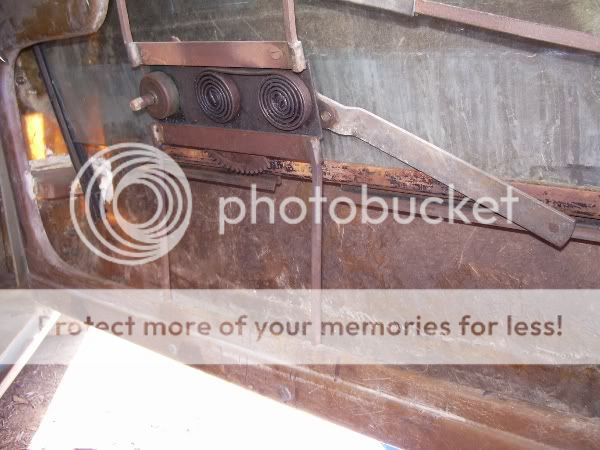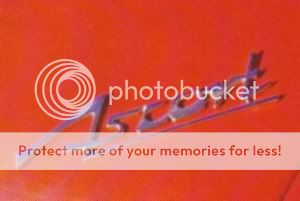If I am going to provide an overview I may as well go the whole hog. There is very little on the net about the Ascort and there is a deal of mis-information there as well. The details below have been gathered during my search for parts and also from documents written by the designer Mirek Craney in 1961 and in 1978. I am not an expert on VW or Porsche so feel free to clarify details or challenge if you can assist.
The Ascort was a low production car and so it borrowed components from other more common vehicles to keep costs down. Here is a bit of a list of what was used.
 Engine
Engine - The engine used was a 1200cc 36hp VW engine with an Okrasa TSV modification kit that increased capacity to 1300cc and power output to 54hp.
This gave the Ascort its full name of “Ascort TSV 1300”.
Floor/chassis – Stock VW 59 – 61. Koni adjustable rear shocks fitted and rear camber reduced. A front sway bar was also fitted.
Brakes – VW seems to have been standard, but some cars have Porsche 356 finned drums.
Body - The body of the Ascort is a glass fibre reinforced plastic (GRP) construction, which used the latest fibreglass spraying technology in its construction, rather than the traditional hand laying of chopped strand mat or cloth. This resulted in much faster manufacture of the bodies and also a high ratio of glass to resin, which is most desirable in a GRP structure The Ascort is known for having one of the best GRP bodies that have been built for a low production car. It is not a particularly light fibreglass body, but it is extremely strong thanks to features such as double panelling, steel door pillars, an incorporated steel roll bar in the windscreen surround, and a number of GRP boxed section in areas such as the sills, bumper bars, front air vents and ducts and rear air chamber, which provided added strength.
Bumper bars – Fibreglass box section integral with the body.
Wheels – VW with Porsche moon caps and dress trims.
Windscreen – Peugeot 403 windscreen.
Rear windscreen – Austin A95
Side windows – Custom made for the car.
 Window regulator
Window regulator – Can anybody recognize this ? Help please!
Door locks – VW
Door handles – Vanguard or Morris Isis
Front bonnet lock assembly – Holden FE.
Front bonnet Hinges – Ford Consul
Rear bonnet lock – VW
Rear bonnet hinges – Ford Consul
Fuel tanks - 2 x Ford 105E Angia fuel tanks. One mounted each side ahead of the rear wheel. The fuel filler and fuel gauge were fitted to the left tank. One vent and one fuel cross feed line connected the two tanks. The tanks were held in place by a strap that wrapped around the tank, with a turnbuckle for tensioning.
Rear air vents – VW pre 58 speaker grills. Most cars had the grills narrowed by 2 bars, but some cars used the standard item.

 Emblems
Emblems – Custom made for the car.
Headlights – 1959 VW or Porsche 356 - Bosch 6 Volt.
Driving Lights – Renrade Sealed beam 6 Volt
Front indicators – Lucas as used on the Morris Minor.
Tail Lights – Lucas – Part L348 – As used on Humber Hawk Mk VI.
Number Plate Light – There are some differences between cars with the number plate light. Most cars use a recessed proprietary light of unknown origin. At least one two early cars had a light which had been fabricated from angle stainless steel.
Windscreen Wipers – Jaguar MkVII converted to 6 Volt.
Windscreen Washers – RVB
Horns – RVB
Switches – VW
Indicator switch – VW mounted on the left of the steering colums.
Headlight dipper – Steering column mount on the right of the column, make uncertain. Has a light on the end of the stalk.
Front Seat – Based on Porsche 356 A series. Outer pivot mounted further forward than inner side pivot. This caused the seat to fold toward the centre to allow easier rear seat access.
Rear Seats – Moulded into the body with a removable centre armrest.
Front ashtray – Front dash ashtray from FE or FC Holden.
Rear ashtray - Rear FJ Holden ashtray mounted at the front of the rear armrest.
Rear vision mirror - Early Porsche 356
Sunvisors – Early Porsche 356 – Acrylic type

 Steering Wheel
Steering Wheel – This is a Petri banjo 2 spoke steering wheel.
Steering Column - VW
Steering Wheel Lock – A lock was fitted. VW or aftermarket?
Guages – VDO clock adjacent to glove box. Centre binnacle – VDO tacho, Motometer 3 in 1 gauge (amps, fuel and oil temp), VDO 100mph speedo. Right of binnacle – VDO oil pressure and Smiths vacuum.
I am sure that I have missed some things, but I am also sure that PRE67VW is the first to get such a comprehensive detailing.
Mark - Owner of 2 under restoration Australian coachbuilt Ascorts.